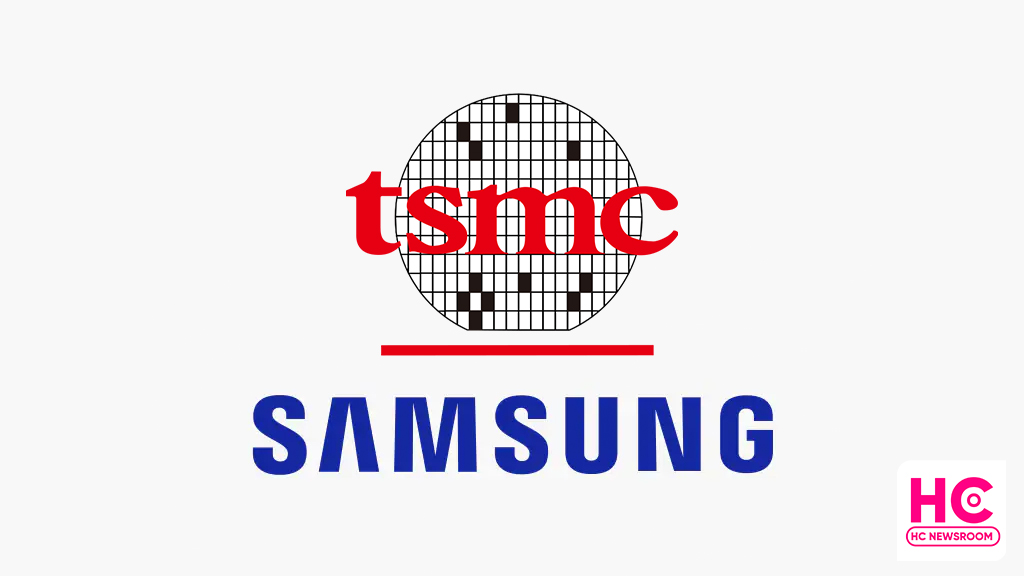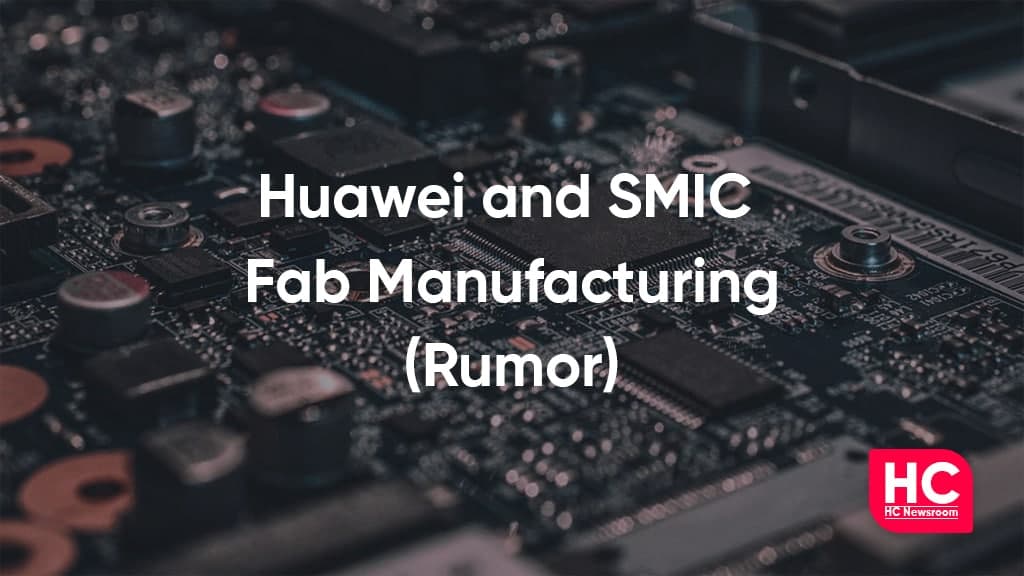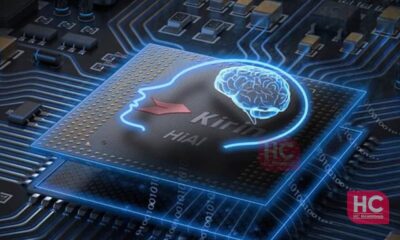Semiconductor
TSMC will rip off Samsung for 80% of 3nm chipsets

3nm is the next stop for mobile chipsets and Taiwan’s TSMC will rip off Samsung for 3nm chipset orders from customers such as Apple, Qualcomm, and MediaTek.
According to a report from Taiwanese media, experts in the study of semiconductors revealed that the current 3nm yield rate is estimated to be about 60% to 70%, or even more than 70%.
Another multinational industry analyst estimated that the current yield rate of TSMC’s 3nm process may fall to about 75%-80%. “There has been such progress in the early stage, which is very impressive.”
The latest input suggests that TSMC has taken the lead in 3nm chip orders and rip off most of the orders from Samsung. In June 2022, Samsung became the first foundry business to announce the initial production of its 3nm process node.
At that time, Samsung’s 3nm yield rate was less than 20 percent and some wafers even had a yield rate of only 10 percent. An industry analyst says, Samsung actually doesn’t know where the fault is.
TSMC says its 3nm process is the most advanced semiconductor technology in both power, performance, and area (PPA). In transistor technology, and a full-node advance from the 5nm generation.
Compared to the 5nm (N5) process, the 3nm process offers up to 1.6X logic density gain and 30-35% power reduction at the same speed and supports the innovative TSMC FINFLEX architecture.
Apple, MediaTek, and Qualcomm:
After Huawei HiSilicon‘s exit, TSMC’s market share was reduced because it was one of the biggest chip customers.
Still, Apple, MediaTek, Qualcomm, AMD, and Nvidia are the top customer of TSMC and Samsung Foundry business. These clients require various chip nodes throughout the year. While, Apple may still be the first to use a 3nm chipset for next year’s iPhones, followed by Qualcomm and MediaTek.
TSMC announced that it is also preparing for 2nm fabs, which will be upgraded six times than the last node process.
Samsung needs to improve:
TSMC is a long-standing chipset printer and Samsung needs to improve its Foundry business to compete against it. That’s all to suggest for the South Korean company.

(source)
Semiconductor
HiSilicon Tianguang 800 chipset news is fake: Huawei
Recently, Huawei’s HiSilicon Tinaguang 800 chip image was spotted, which was shared by whitsleblower@Fox Place MU Ling on Weibo. Now, Huawei has officially responded that HiSilicon Tinaguang 800 chip news is “fake news”.
The previously shared HiSilicon Tinaguang 800 chip image shows that the chip is printed with the HiSilicon logo and has coded text at the bottom. It was also reported that it may be a GPU and could launch this year.
Talking about the tipster, whistleblower@Fox Place MU Ling is said to be an employee of Huawei that’s why some users believe that this information is very reliable. Now, the Huawei executives have personally denied this news. It looks like this news is actually a rollover.
![]()
According to the previous information, , the word “Tianguang” refers to comes from the Taoist “Zhuangzhi Gengsangchu”, the original text being “Yutai Ding, emerging from the sky”, referring to the natural light of wisdom.
Huawei HiSilicon:
On January 1, 2022, Huawei Kirin gives New Year wishes and stated mentioned, in 2022 continue to set off and move towards the chip. It clearly hints that there could be a new breakthrough waiting for us to unravel in the coming year and we might see a new Kirin processor soon.
In May 2019, the U.S government black-listed Huawei and restricts the U.S based companies to supply components. Since then, the Chinese tech maker is facing issues and a shortage of components.
During this timeline, Huawei is working hard to overcome this situation and find alternatives to get rid of component shortages. It was also reported that the Chinese tech maker will soon take a big move in 2022 that it will a permanent solution for the component shortage.
(Source: ithome)
Semiconductor
Huawei HiSilicon Tianguang 800 chip spotted, launching in 2022
Early this month, Huawei Kirin sent the New Year 2022 wishes and stated to continue to set off in 2022 and move towards the “chip”. According to the latest information, the new Huawei HiSilicon Tianguang 800 chip has been spotted with the HiSilicon logo and is expected to launch soon this year.
This image of this upcoming chipset was shared by a tipster with the caption Huawei HiSilicon Tinaguage 800 chip. By inspecting the chip, it is noted that the chip is actually printed with the HiSilicon logo and has coded text at the bottom.
![]()
HiSilicon Tianguang 800 chip:
Huawei HiSilicon’s upcoming HiSilicon Tianguang 800 chip could be a powerful GPU, which is unknown at the moment. Also, the word “Tianguang” refers to comes from the Taoist “Zhuangzhi Gengsangchu”, the original text being “Yutai Ding, emerging from the sky”, referring to the natural light of wisdom.
Huawei HiSilicon:
Since 2019, Huawei and its semiconductor subsidiary HiSilicon is facing a lot of issues and continuously working hard to overcome them. On January 1, Huawei Kirin welcome 202 and said that the technology will be more refined in the future.
On the other hand, Huawei HiSilicon has launched chips, and last year, it released HiSilicon’s Image Processing Engine (ISP) to achieve deep integration of image quality technology and AI technology.
Last December, at the 3rd China Semiconductor Investment Alliance Annual Conference and China IC Billboard Awards Ceremony the “Top 100 Chinese Semiconductor Companies” list was announced in which Huawei HiSilicon is listed on the top position.
![]()
(Via: ithome)
Semiconductor
Huawei and SMIC fab manufacturing news is a rumor: Industry Insider

Recently, some industry insiders confirmed that it is a rumor that Huawei and SMIC will build a wafer fab manufacturing company in China. Just a few days ago, it was reported that Huawei with the help of SMIC develop fab with around ten billion dollars investment.
In addition to this, a report also mentioned at the industry exhibition in Taiwan, the relevant personnel of Huawei and TSMC’s supply chain partners was spotted discussing the equipment purchase for the factory. It is disclosed that SMIC Southern and local government funding and other details.
Regarding this, a person familiar with this matter from Huawei told Chinese media that above the news was false. Meanwhile, several people close to SMIC also mentioned that SMIC never participated in this and assisted Huawei in building any factories.
However, the cooperation between the two parties was a legal and regulatory business activity only at the foundry level, not external, conceived the development of “grouping and warming”.

SMIC and Huawei:
SMIC is the largest wafer fab and contract chip maker in mainland China. To restrict these firms, the US government listed them on the “entity list” and targeted sanctions policies are increasingly being implemented. Since then, Huawei is facing a shortage of core components and finding solutions to overcome them.
So far, Huawei and its allies have been banned from all U.S, which prohibits the companies from purchasing goods made with the country’s manufacturer or supported technologies.
Therefore, SMIC must be licensed to import required components. It is also necessary to apply to the Department of Commerce for advanced technology nodes (10 nanometers or less), direct export of essential goods required for the production of semiconductors will be restricted.
China’s independent supply chain system is still difficult to meet the requirements of Huawei and SMIC. Therefore, the two companies’ operations still need to be enforced in the United States to import certain key products, materials, and equipment.
So, a person familiar with the matter pointed out that, in fact, SMIC and Huawei have maintained long-term and effective communications with the US Department of Commerce, and the two companies have never thought of working behind closed doors.
Even under extreme pressure, Huawei founder Ren Zhengfei has repeatedly stated publicly that Huawei will be more determined to cooperate with US companies and maintain an open attitude. SMIC co-CEO Zhao Haijun once explicitly stated in a financial report briefing that SMIC has maintained a stable cooperative relationship with US suppliers for the past 20 years. Therefore, a large number of US suppliers are the first choice of SMIC.
After getting banned, SMIC and suppliers actively applied for permits for the first time, and the supplier is also updating the progress of permit applications by fab makers. On another level, Huawei and SMIC are among the few domestic semiconductor companies that insist on taking an international route to serve customers around the world.
Among them, SMIC not only helps in the development of domestic design companies but also provides support for the local production of many major international companies. At the same time, in recent years, SMIC, including Beijing, Shanghai, Shenzhen, and many other places, has launched new capacity projects focusing on 28 nanometers and above, and it is impossible for the customer to stop its progress.
If both sides try to break the technical blockade of the United States through cooperation in building factories, this could lead to further sanctions in the United States. Therefore, it is advisable to adopt this method to jeopardize the security of both parties in the operation of the company.
(Via: ithome)






